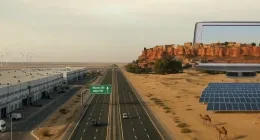E-commerce, a thing that was unheard of a decade ago and has become an integral part of our lives today, has given rise to some of the biggest companies in the world, thanks to ease of access and a better shopping experience. However, as good as e-commerce is, there’s always room for innovation, and thus enters social commerce. Now, instead of searching through hundreds of items on Amazon until you stumble upon the sunglasses that your favorite model was wearing, platforms are trying to make it so that you can buy stuff right from their social media posts. Social commerce platform Trell has already set out to dominate this emerging market, and has raised $45Mn to further its goal.
The Series B funding round was led by Mirae Asset, H&M Group and LB Investments at a post-money valuation of $120 million. Existing backers along with KTB Network, Samsung Ventures, and Fosun RZ Capital also participated in the round, which brings Trell’s to date raise to a massive $62Mn.
Trell offers a vernacular, video based platform where you can shop exactly what your favorite influencers are wearing. It sells lifestyle products, which are advertised by social media personalities, and charges a commission of 20-25% per order.
Thus, in essence, Trell is the QVC of social media, and has already managed to become a dominant force in Tier 2 and Tier 3 cities across India.
While social commerce may sound like an alien concept, more and more platforms have been trying to include it in some shape, including the likes of Instagram and YouTube. However, there’s no go to solution in the market, and thus, a company like Trell has a massive opportunity ahead of itself.
With this new funding, Trell will invest in building an engineering team and expand footprint in several lifestyle categories like home care, apparels, baby care etc. Moreover, it also plans to include 6 more languages on its platform by the end of the year, allowing it to expand to over 200 new cities and towns in India.
The Tech Portal is published by Blue Box Media Private Limited. Our investors have no influence over our reporting. Read our full Ownership and Funding Disclosure →






